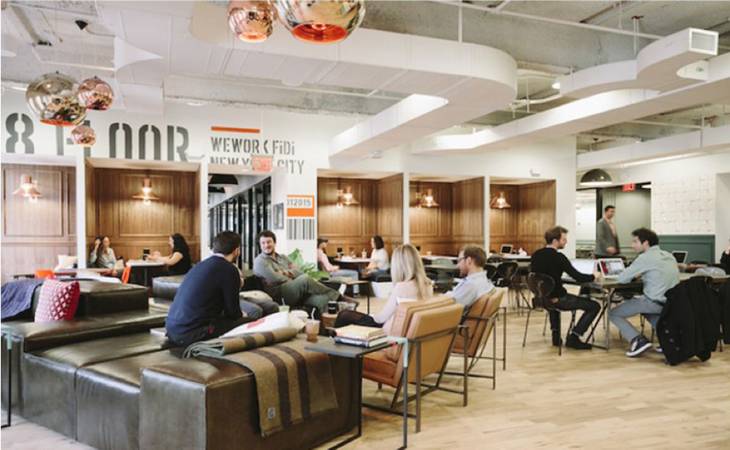
The Millenniums: Workspace design is more important than pay checks
"Today´s good office design is a lot more about networking, interactions, content at work sitting in super creative, delicious and aesthetic frames.
A decade ago we discussed good acoustic work environments, indoor climate, sufficient daylight etc. as hygiene factors. I wouldn´t say those factors have turned insignificant, but today we have reached far higher levels of the food chain."
This is the expression of Gitte Andersen, Global Head of Workspace Management & Design at SIGNAL, brought in a current interview in SKANSKA Magazine.
As an expert of workspace management and design with many years of experience in the strategic use of office spaces to promote efficiency and productivity, she believes that focus on the basic physical office frames is a passé and that it is time to raise the barren and look forward.
WOW factor
"A recent US survey showed that 70 percent of the millenniums - the young generation born between 1980 and 2000 - entering the labor market, believes that workspace design is more important than pay checks.
Similar statistics tell us that six out of 10 employees find inspirational surroundings most important enabling them to live up to their full working potential. Workspace design absolutely contains an essential significance for our performance," Gitte Andersen points out.
Aesthetics is a key word for the experienced Danish office space designer when she starts to create new workstations - no matter which kind and processes of work her design should support.

"We all want to feel a sense of "WOW factor " in our workspaces when we arrive in the morning. Everybody knows the feeling of entering a room where it makes fun to work. But most of us also experienced spaces you just wanted to escape screaming
Both might be examples of top modern activity-based work environments with brand new designs - so what makes actually the difference?
The answer is the people and aesthetics of the spaces. And also the fact that the spaces do support the processes of work that we need to be supported during the working day," Gitte Andersen adds..
The conflicts of change
She knows and acknowledges exactly all the conflicts that easily arise when the company's management puts the physical framework on their agenda targeting higher efficiency or better ways to cooperate.
"When employees get knowledge of that sort of thing, they instantly "freeze". Then everyone falls deeply in love with their existing physical environments, which they as soon as yesterday found absolutely terrible - because they fear the unknown changes of tomorrow.
People become resistant to changes, although it may be the changes that ensures they have a job tomorrow, " Gitte Andersen says.
"On the othjer hand managements sometimes forget the importance of informal cooperative spaces - the ad hoc-based areas of your workplace where employees are able to meet during the day to exchange knowledge without planning.
It´s precisely here that you really lower the reaction times of the organization, where you reduce your time spended on meetings - where you get direct access to your colleagues.
Also those are the spots that enable strong cultures to arise because here you talk more relaxed about things - for example in small cafe designs, where a couple of colleagues can get together and coordinate things.
The challenge is to establish small water holes all across your business areas in order to support spontaneous meetings and interdisciplinary initiatives."
Network spaces
Gitte Andersen emphasizes that designing offices is about revealing the company's needs before thinking solutions and building physical frames to support professional strategies.
"Start asking your management where to perform better in terms of optimizing success in the market. Exactly those statements are so important to get hold of.
In addition you´ll have to identify which types of space design that would promote or nudge a particular behavior. From this point you start to work with the space as a strategic tool for higher performance.
It´s definitely a success criterion that your employees choose the work space because of its abilities to support their working communities, which support the cooperative processes between colleagues.
The main thing is to create network spaces where people can relate to each other: How do we work together in our networks, which options do we have for sparring and knowledge sharing - and also which opportunities do we have for accessing other skilled colleagues? These are the parameters we must start to care for," Gitte Andersen underlines.
Read more:
Servicefutures.com: Strategic workplace management - the key to unlocking competitiveness
Workspacedesign.co.uk: How the workspace has evolved in the last 20 years
SmallBusiness.co.uk: Half of office workers are unproductive due to poor workspace


